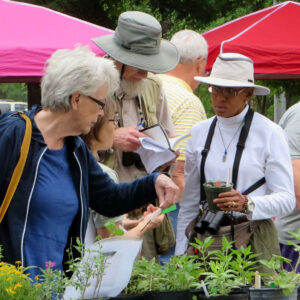Add a flourish of Mediterranean panache to your landscape — and say, “Ciao!” to pesky mosquitoes — by planting lavender.
Lavender, a native to the Mediterranean region, enjoys hot summers and mild winters — and that’s exactly what San Antonio’s climate offers this drought-tolerant perennial.
Reputed to be a natural mosquito repellent, lavender is also nontoxic to pets and generally carefree. But while the weather conditions in San Antonio make growing it a breeze, the key to lavender’s success is well-drained soil. And depending where you live in San Antonio, the soil will vary.
In the rocky Hill Country, you can just plant lavender in the ground. However, mostly or partially clay soils are found throughout San Antonio and consequently don’t drain well. The solution is as simple as growing it in a pot with modified potting mix. Or you can add expanded shale, biochar or copious amounts of compost to the native soil.
Lavender is drought tolerant so it doesn’t need to be watered frequently once it acclimates to the site, which may take up to a full year. Once established and depending on the season and natural rainfall, one to three times a month is all the water it needs.
Also, lavender loves the sun and should be planted in an area with good air circulation and little to no mulch. Since it is a perennial plant, lavender will stick around for many years. You can help promote strong new growth each year by pruning it during the winter. In Texas, lavender blooms between mid-May and early June, just in time for those early summer barbecues (and the arrival of those biting bloodsuckers).
There are over 45 different species of lavender. We recommend the French or Spanish lavender (Lavandula stoechas) or if you can find it, Egyptian lavender (Lavandula multifida).
by Michael Kenny
Former SAWS Conservation Intern


